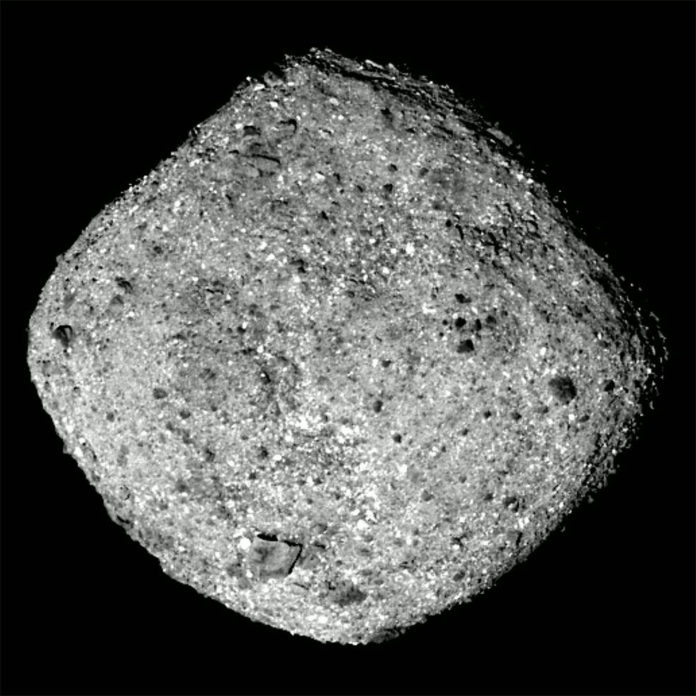NASA’s OSIRIS-REx spacecraft has completed its journey through space of two billion kilometers and arrived at its destination, asteroid Bennu, on Monday, Dec. 3, 2018.
OSIRIS- REx was launched on 8 September 2016 and has been slowly approaching Bennu. As it reached close proximity to Bennu, it will begin analyzing its surface for a target sample area over the next several months. It is expected to return with its sample to Earth on 24 September 2023.
Lori Glaze, acting director for NASA’s Planetary Science Division said, “As explorers, we at NASA have never shied away from the most extreme challenges in the solar system in our quest for knowledge. Now we’re at it again, working with our partners in the U.S. and Canada to accomplish the Herculean task of bringing back to Earth a piece of the early solar system.”
The spacecraft will spend almost a year surveying the asteroid with five scientific instruments with the goal of selecting a location that is safe and scientifically interesting to collect the sample.
OSIRIS-REx’s mission will help scientists investigate how planets formed and how life began, as well as improve our understanding of asteroids that could impact Earth. Asteroids are remnants of the building blocks that formed the planets and enabled life. Those like Bennu contain natural resources, such as water, organics, and metals. Future space exploration and economic development may rely on asteroids for these materials.
Dante Lauretta, OSIRIS-REx principal investigator at the University of Arizona, Tucson said, “The OSIRIS-REx team is proud to cross another major milestone off our list — asteroid arrival. Initial data from the approach phase show this object to have an exceptional scientific value. We can’t wait to start our exploration of Bennu in earnest. We’ve been preparing for this moment for years, and we’re ready.”
Rich Burns, the project manager of OSIRIS-REx at NASA’s Goddard Space Flight Center in Greenbelt, Maryland said, “During our approach toward Bennu, we have taken observations at a much higher resolution than were available from Earth. These observations have revealed an asteroid that is both consistent with our expectations from ground-based measurements and an exceptionally interesting small world. Now we embark on gaining experience flying our spacecraft about such a small body.”
